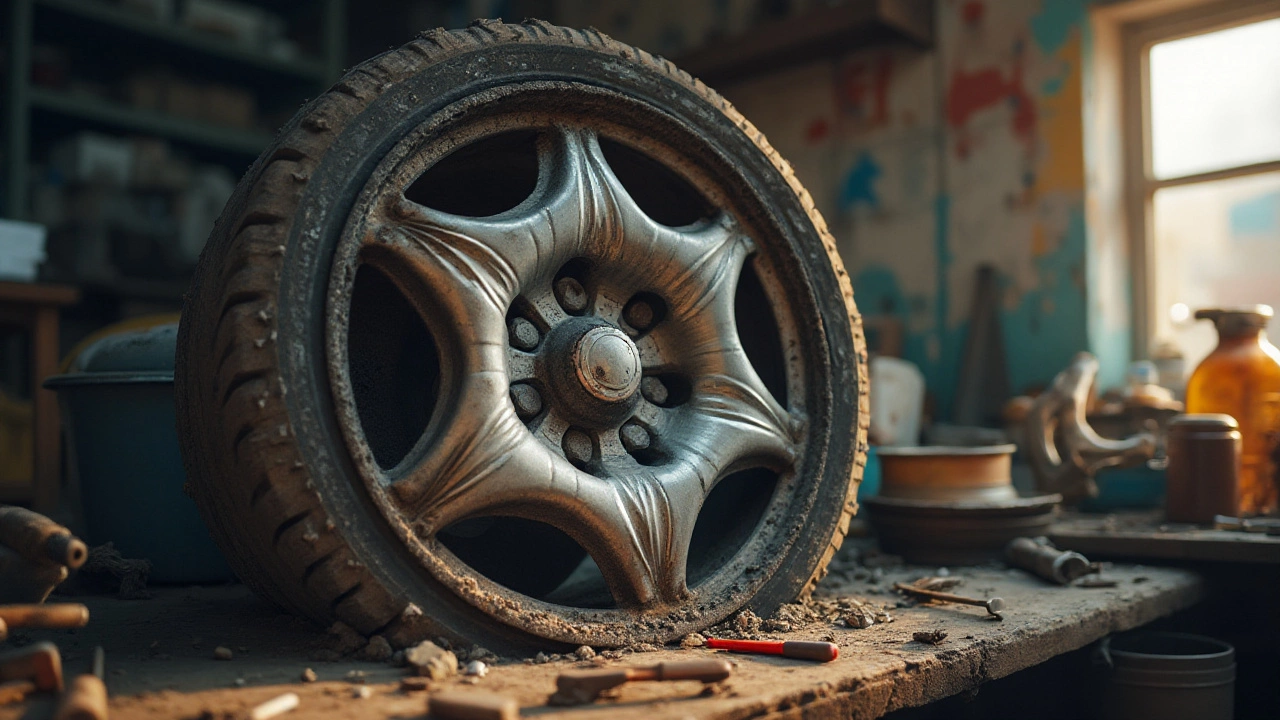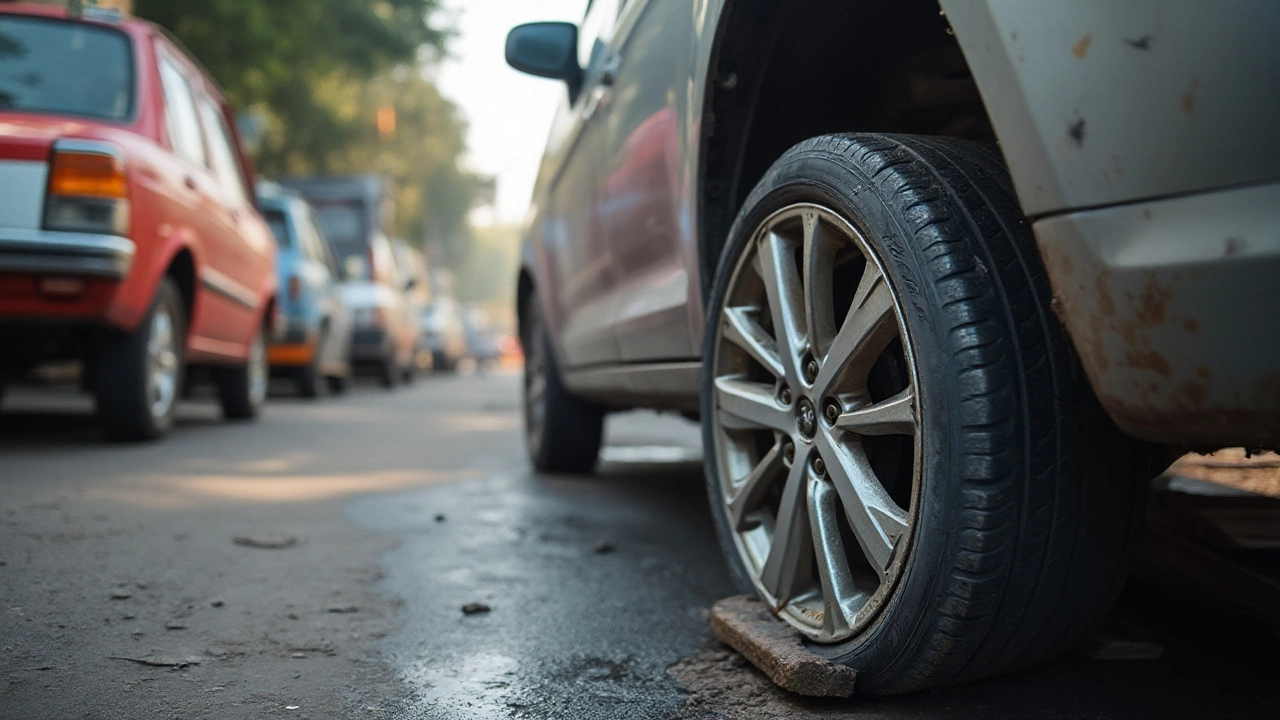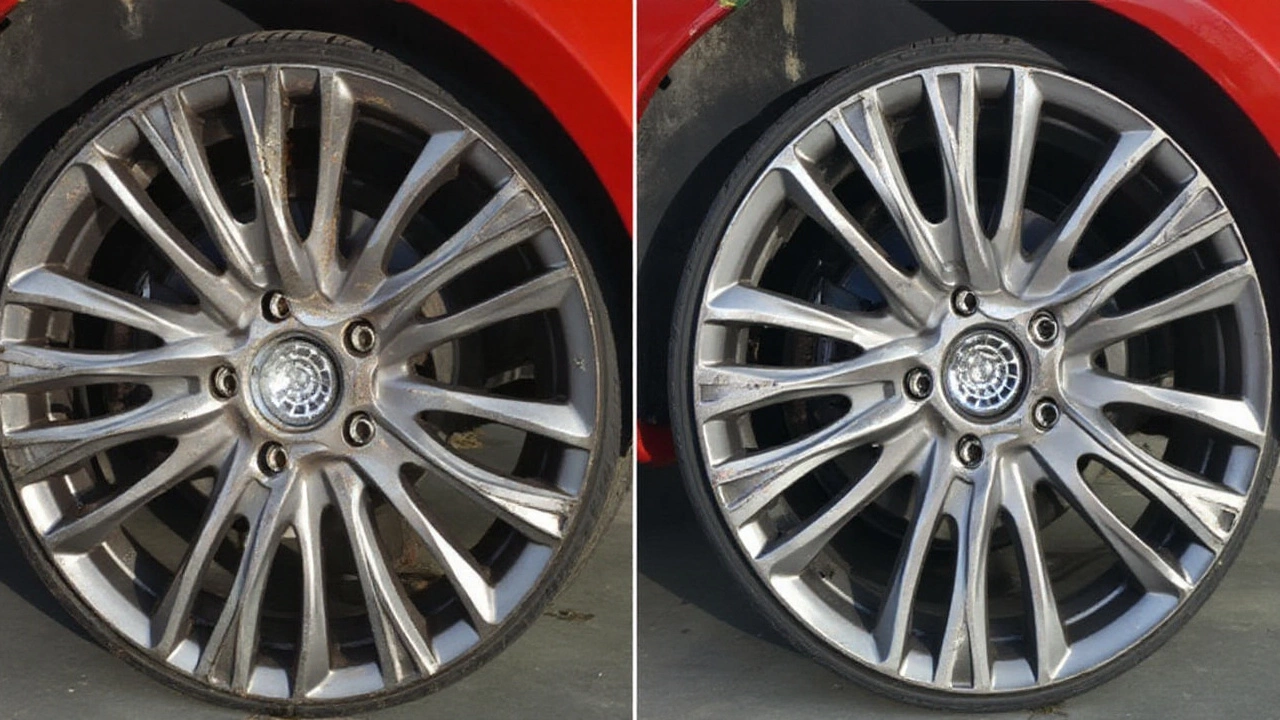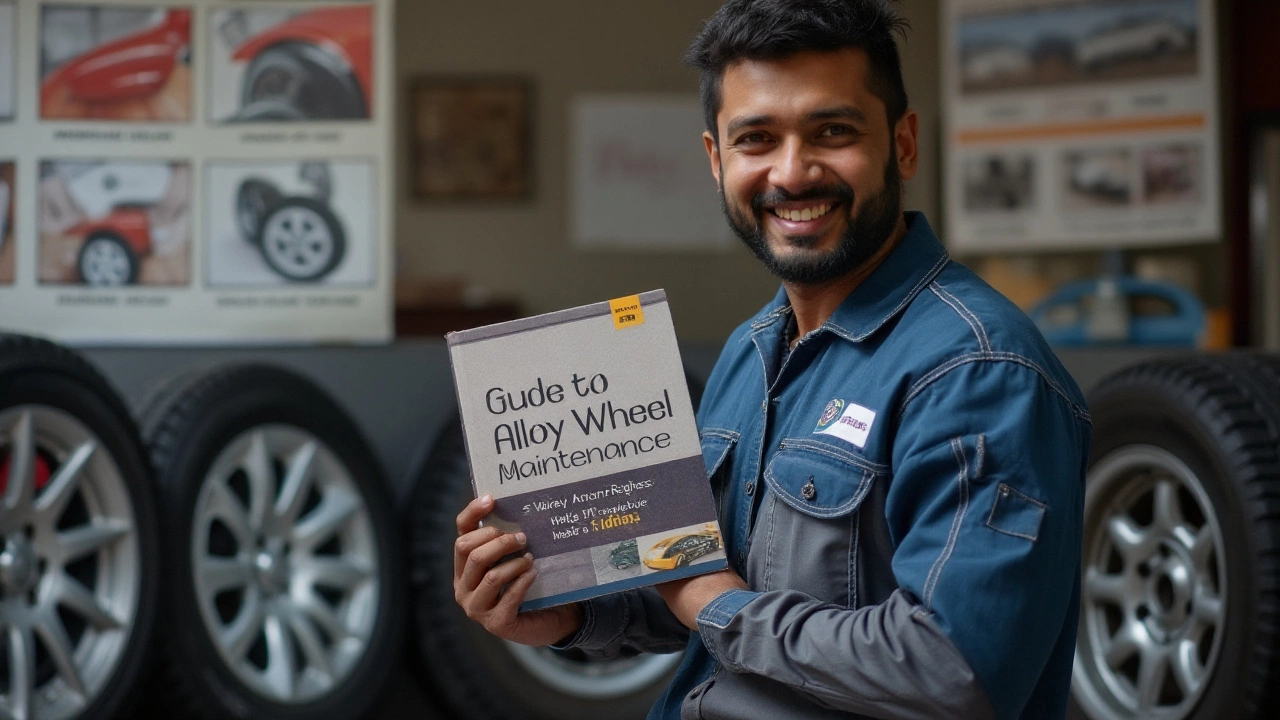Can Damaged Alloy Wheels Be Repaired: An In-Depth Guide
 Jan, 12 2025
Jan, 12 2025
Alloy wheels are a popular choice for many vehicle owners due to their light weight and aesthetic appeal. However, like all car components, they are not immune to damage. From curb scratches to pothole-induced bends, wear and tear can take its toll.
When faced with damaged alloy wheels, the question arises: can they be repaired? The answer varies based on the extent and type of damage. Some issues are easily fixable, while others might require a more skilled touch or even replacement.
This article will explore how bad damage can be before repair becomes impossible, which repair techniques are most effective, and how regular maintenance can keep wheels in prime condition for longer.
- Understanding Alloy Wheels and Their Construction
- Common Damages and Their Causes
- Methods and Techniques for Repairing Alloy Wheels
- Maintenance Tips to Prolong Wheel Life
Understanding Alloy Wheels and Their Construction
The allure of alloy wheels usually lies in their sleek appearance and enhanced performance. These wheels are frequently made from a mix of metals, primarily aluminum or magnesium, combined with other elements. This composition is what gives alloy wheels their strength and lighter weight compared to traditional steel wheels. The reduction in weight helps in improving the vehicle's acceleration and braking efficiency, making them a favorite among car enthusiasts and manufacturers.
One striking feature of alloy wheels is the variety of designs they can adapt to, thanks to the flexibility of the materials used in their manufacture. These wheels can transform the look of a vehicle significantly, adding a touch of modernity and sportiness to any car model. Besides aesthetics, the design also plays a crucial role in functionality. For instance, some designs incorporate structures that aid in better heat dissipation from the brakes, enhancing safety and performance on the road.
The manufacturing process of alloy wheels typically involves casting or forging. Casting is a method where the heated alloy material is poured into a mold, allowing for intricate designs. On the other hand, forging involves compressing the alloy under high pressure, resulting in denser, stronger wheels. Forged wheels are often preferred in high-performance vehicles for their superior strength to weight ratio. According to the Society of Automotive Engineers, "Forged wheels can be 20% lighter and 30% stronger than cast wheels," offering both durability and efficiency.
However, not all that glitters is gold. Alloy wheels, despite their advantages, have some disadvantages when it comes to durability. They are more susceptible to damage from road impacts such as potholes or curbs, compared to their steel counterparts. This vulnerability has given rise to the necessity for effective wheel repair services that can restore damaged rims to their former glory. Nonetheless, understanding their construction better equips vehicle owners with knowledge on maintenance and repair, ensuring they continue to drive with both style and safety.

Common Damages and Their Causes
The allure of alloy wheels lies in their blend of performance and aesthetic appeal, yet they are surprisingly vulnerable to a host of potential damages. Primarily, surface scratches and scuffs are arguably the most visible signs of damage. These imperfections often occur when a driver brushes against a curb while parking or maneuvering in tight spots. While these might seem trivial, over time, they can lead to corrosion if not promptly addressed. This corrosion happens because the protective layer on the wheel is disrupted, exposing the metal to moisture and air which facilitate the rusting process. It's fascinating to consider that such a seemingly insignificant scratch can have domino effects on the integrity of the wheel.
Bends and cracks represent a more insidious form of damage. Potholes are the main culprits here, and their presence is a perennial issue on many roads worldwide. When a wheel hits a pothole at speed, the intense, sudden impact can cause the wheel to bend or even crack. This kind of damage threatens not only the aesthetics of your rims but also the safety of your ride. An interesting note - the advent of bigger wheels with smaller tyre sidewalls, a common sight in today's vehicle designs, exacerbates this issue because there's less cushion to absorb such impacts. As such, a keen eye on road conditions and a moderate driving speed can mitigate these risks substantially.
A renowned automotive journalist once noted, 'The road to impeccable car performance is paved with well-maintained wheels.'
Another intriguing aspect is the damage caused by corrosive brake dust. This pesky substance emanates from the wear and tear of brake pads and accumulates on wheels over time. Without regular cleaning, brake dust can become a stubborn residue that not only detracts from wheel shine but also breeds an environment for chemical corrosion. The combination of heat, moisture, and this metallic dust can create pits and discoloration on an alloy wheel's surface. Regular cleaning, certain waxes, and sealants can offer some protection, helping car lovers maintain that showroom sheen. But be wary of abrasive cleaners, as these can sometimes do more harm than good by scratching the wheel surface.
Finally, improper maintenance practices may inadvertently damage alloy wheels. For instance, using high-pressure washers repeatedly can eventually strip the protective layers off the wheel. Similarly, using the wrong cleaning tools, such as stiff brush bristles intended for another surface, can mar the delicate finishes on many modern alloys. To avoid unintentional damage, always follow the manufacturer's cleaning guidelines and use tools and products specified for alloy wheels.

Methods and Techniques for Repairing Alloy Wheels
When it comes to reviving damaged alloy wheels, several methods have proven effective, each suited for specific types of damage. Many car enthusiasts and professionals swear by these techniques, describing them as a blend of art and science. The process begins with a comprehensive assessment, identifying the extent of the damage. Surface scratches might seem superficial but can lead to more significant issues like corrosion if left unchecked. Polishing and refinishing are ideal for cosmetic damages, restoring shine and smoothness.
For deeper gouges or curb rashes, technicians might turn to a process called welding. This involves filling in the damaged sections with alloy material, then grinding and polishing the area to achieve a seamless finish. Wheel repair specialists often use a lathe to ensure that the wheel rotates evenly, ensuring balance is not compromised. In cases where the rim is bent from impact, a hydraulic assistance machine is utilized. This tool applies pressure to the exact spot needing repair, carefully straightening the metal without causing further damage.
“Precision is key when working with bent rims. The aim is to restore them to their original form without weakening the structure,” notes John Matthews, a respected wheel repair expert.
Paint damage repair is another critical area. With each wheel design being unique, color matching becomes vital. Many repair shops invest in spectrometers to precisely match the wheel's original color, ensuring uniformity across all surfaces. Professionals also apply a clear coat at the end to add a protective layer against future abrasions.
Modern technology has also brought computerized rim straighteners into the fray, adding accuracy to the repair process. These machines detect incipient imperfections and correct them before they escalate into severe problems. It's a perfect synergy between human expertise and technical precision.
Common Repair Techniques
Some of the most common techniques include welding, filling, and painting, all of which are pivotal in wheel restoration. Welding, for instance, can address cracks effectively, whereas filling ensures a smooth finish following any structural repair. Painting is not just about aesthetics but also about providing an extra layer of protection. A correct paint job involves sanding, priming, painting, and applying a clear coat.
- Welding: Used for structural damages, welding ensures the strength of the wheel is maintained.
- Filling: Usually follows welding, ensuring the wheel surface is smooth and seamless.
- Painting: Beyond aesthetics, paints serve as protective coats to prevent possible damages from environmental factors.
Each technique requires not only the right tools but also considerable skill. The technician must evaluate every wheel independently, considering variables such as wheel design, the alloy used, and the nature of the damage. While DIY kits are available for minor repairs, serious damages should undoubtedly be left to professionals. Their expertise could make the difference between a disaster and a triumph.

Maintenance Tips to Prolong Wheel Life
Regular maintenance of alloy wheels is an essential aspect of car care that can significantly enhance their durability. Alloy wheels are known for their aesthetic appeal and performance benefits, yet, just like any other part of a vehicle, they demand attention to ensure they last longer. Weekly checks should include closely inspecting the wheels for any signs of corrosion or damage. Early detection of wear can prevent more substantial issues down the road. In particular, owners should focus on areas exposed to harsh chemicals, like salty roads in winter, which can be detrimental to the wheel's finish. Cleaning them regularly not only preserves their look but also their strength, making sure that no residue alters their composition over time.
One critical aspect of maintaining alloy wheels involves utilizing the right cleaning agents. Many are unaware of the impact that certain harsh cleaning chemicals can have on the wheels' surface. It is advisable to use pH-balanced cleaning products tailored specifically for wheel repair and maintenance. According to experts, “Using a wheel cleaner with acid can strip away the protective coating of alloys.”
“A simple soap and water solution is often enough,” says John Doe, a noted automotive expert. “For stubborn dirt, a dedicated alloy cleaner is best, but it must be free from corrosive chemicals.”Careless cleaning can cause long-term damage, so it’s wise to be informed about the tools and substances being used.
Balancing and rotating tires at regular intervals plays a critical role in reducing undue stress on wheels. A recommended practice by professionals is to rotate the tires every 6,000 to 8,000 miles. This process ensures even wear among all wheels, helping them maintain optimum condition. Likewise, balancing is equally crucial as it addresses any uneven weight distribution in the wheels, which might affect their performance and lifespan. Ignoring these procedures can lead to unexpected damage and could impede efficient wheel restoration efforts.
Parking strategies are another often-overlooked component of wheel maintenance. Avoiding sidewalks, potholes, and sharp curbs can prevent physical damage or scratches to the alloys. If possible, parking in shaded or covered areas protects wheels from the wrath of harsh UV radiation which, over time, can deteriorate the finish and lead to fading. Drivers should remain vigilant when navigating their environments, aiming to keep their alloys free from accidental scrapes or dents.
Seasonal tire use also offers an opportunity to prolong damaged rims, especially in regions with extreme weather conditions. Switching to winter tires during colder months can protect the alloys from snow and salt exposure. Wheel restoration becomes less of a concern when preventive measures, such as using a dedicated set of rims for extreme seasons, are implemented. This investment can effectively reduce long-term maintenance costs and uphold the pristine condition of the regular set of wheels.
| Maintenance Practice | Frequency |
|---|---|
| Cleaning | Weekly |
| Rotation & Balancing | Every 6,000-8,000 miles |
| Inspection for Damage | Monthly |
By adhering to these maintenance practices, vehicle owners can significantly extend the lifespan of their alloy wheels, ensuring they remain both beautiful and functional for years to come. Remember, a bit of diligence can save an alloy wheel from potential damages, reducing the need for frequent repairs while keeping them in top condition indefinitely.